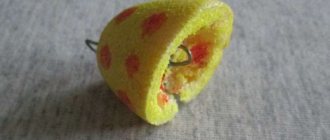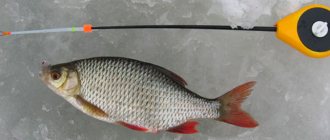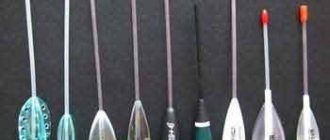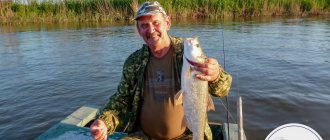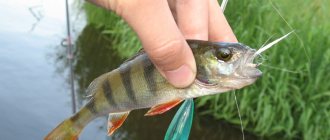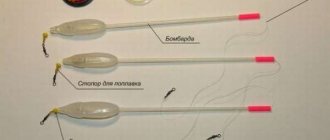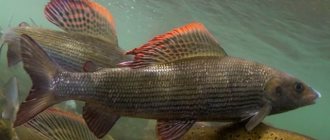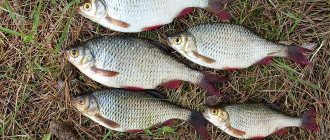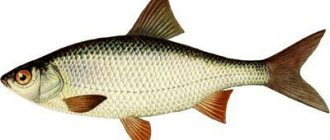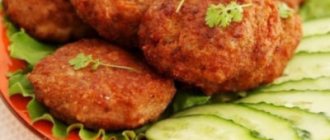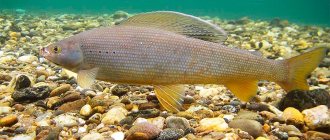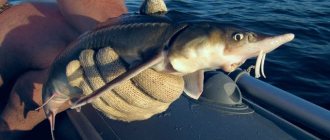Catching rudd with a bombard
Bombarda or sbirulino is a special weighted float. Designed to simplify the supply of light baits 50-100 m from the fishing spot. Sbirulino does not act as a signaling device, unlike other types of floats. Catching rudd with a bombard combines the advantages of spinning fishing with fly fishing, providing the opportunity to effectively work with long casts on light baits. Spoons, wobblers, fly fishing flies and silicone baits do not have the necessary mass to deliver them to the distance we need, so they are attached to a bombard rig.
Rudd and its habitat
Rudd is a colorful and beautiful freshwater fish. Prefers secluded areas of the reservoir with dense aquatic vegetation. The most practical method of catching freshwater fish is considered to be a telescopic rod and a water-filled float.
The rudd is common in the rivers of the Azov, Black, Caspian and Aral seas, in the rivers of Siberia and the Baltic states. On the east coast of the Pacific Ocean you can also hunt for the Far Eastern rudd (ugai).
The common rudd has a pleasant body shape, is covered with silvery scales with a characteristic golden tint, has reddish-flecked eyes and deep scarlet fins.
The external features of the freshwater fish, including its relatively large size (reaches up to 35-36 cm), make the rudd a desirable prey not only for amateurs, but also for professional fishermen.
Rudd abundantly inhabits river bays, lakes and artificial reservoirs. It prefers to inhabit quiet corners with minimal water movement, closer to large accumulations of reeds, water lilies and other types of plants, since in places with a developed fauna it is easier for the rudd to hide from predators and find food for itself. Small-sized freshwater fish prefer to group in schools and feel calm in places where reeds accumulate right in front of the shoreline. Although larger individuals are found in coastal areas, they more often settle at depth, selecting underwater areas with large accumulations of algae.
Choosing the right place
When choosing a site for catching large specimens with a bombard, you should take into account their attachment to plant clusters and at what depth they are located under water. Redfish are most often found in underwater thickets of grass only during the flowering period, and at the end of summer, when the algae begin to gradually fade, the redfin concentrates in the reed area.
The rudd is considered a sedate fish, rather even a conservative one, since it rarely leaves its favorite area of the reservoir.
During the hot season, it is found in the upper layers of water, often basking in the sun.
The fish prefers water areas with weak currents or completely stagnant water, is well caught in small creeks and bays, and in reservoirs it is grouped in warm shallow water.
Determining the location of the fisherman often involves the presence of windows in dense coastal thickets; the stable fishing depth for rudd is 1-1.5 meters. The largest individuals love deep places, but closer to dawn or late in the evening they approach the shore and wait for their favorite food - insects that were careless to fall into the water.
To determine the largest concentration of rudd in a pond, we recommend tracking its activity in calm and warm weather. The fish is easy to identify by its frequent splashes and characteristic smacking sounds.
Selection of gear and installation of bombards
Tackle for rudd
For fruitful fishing for rudd, we need a good spinning rod 3-4.5 meters long, a spinning reel (suitable for almost any brand), a fishing line with a diameter of 0.08 mm (using braid) or 0.2 mm (using monofilament).
When fishing for rudd with a water-filled float, it is advisable to use braid so that the bite is felt at the tip of the rod.
Tackle for rudd is equipped as follows.
The main line is threaded through the float tube, which should be directed towards the tip of the rod. Then we put a soft damper bead and special swivels with a carabiner on the fishing line. If there is a need to deepen the bait, then we use a sinker for this.
The diameter of the fishing line leashes should be 0.14-0.18 mm, and the length should be approximately 40-60 cm. We tie a spoon and a suitable bait to the leash. The number of leashes on the tackle can be 3-4.
The fishing line and the weight of the float are completed - taking into account the weight of the future catch, the heavier the float, which acts as a sinker, the further the tackle will be cast. In this case, the load on the line increases greatly, so a silicone stopper should be installed on the line to compensate for the impact of the sbirulino when casting. The stopper protects the assembly from damage. After the stopper, we tie the triple swivel with a clinch.
We connect the swivel to a monofilament leash approximately 1.5-2 meters long (when fishing with a bombard, the length of the leash plays an important role; the longer it is, the better for fishing tackle). And at the end of the leash we attach the bait to the rudd.
Tackle for rudd
Float rod
According to many statements, the most universal tackle for rudd is a regular float rod without unnecessary bells and whistles. Carbon fiber rod 5 m - 6 m, without rings and reel. Invisible monolithic fishing line, cross-section 0.2 mm. A leash 15 cm long - 20 cm , with a fishing line 0.1 mm - 0.15 mm. Sinker-pellet. Sharp hook No. 3.5 - No. 4 with a short shank. Small float. A classic set from time immemorial.
No carabiners, swivels or tricky loops. The leash to the fishing line, and the fishing line to the fishing rod are tightly secured. But the main thing is exceptional attention to all the components of this simple gear. The fishing line is only suitable if it is fresh and purchased from a trusted manufacturer . The hook is sharpened to the sharpness of a razor blade, and with hardened damask steel. The rod is comfortable in the hand and flexible, especially in the upper part. Only with such a set of quality can you count on the absence of line breakage or fish falling off a blunt and bent hook.
The fish itself will help you choose the best bait. For successful fishing you need to have a supply of baits, both animal and plant .
By changing several species in a row , you can decide which menu the capricious rudd prefers today. And having decided, it is preferable not to sit in one place, but to walk along the shore, fishing for all the tempting places.
Fishing rod without float
At the height of summer, when there are a lot of insects falling into the water, it can be useful to remove the float and change the fishing method from deep to surface fishing. and artificial imitations are used as bait The sinker is set to the minimum size. To prevent it from pulling the bait deeper, pieces of foam are sometimes added to it.
The use of artificial insects allows you to remove the sinker altogether , since its role is played by the bait itself. Some even prefer to catch rudd using a jig with this tackle, citing greater prey potential. When the jig is played correctly, this sometimes actually gives a good result, especially for catching large specimens.
Interested in the benefits of pollock? In the article you will learn about the beneficial and harmful properties of this fish.
In this article you will learn the basic techniques for catching roach in the spring.
Feeder tackle
This relatively new tackle evokes an ironic attitude among many. But those who tried it out became ardent fans of the Western novelty. Its main drawback is its high cost . Therefore, many people adapt a spinning rod for this method of fishing, providing it with an additional tip. In a strict sense, feeder gear for catching redfish ceases to be a feeder, because the feeder itself (feeder) is removed, and the gear is transformed into fly fishing gear.
Catching rudd with feeder tackle requires the use of an “ultralight” rod, which is more often called a “picker”. Short, (2 m - 2.5 m), two-jointed with a medium-sized tip, it fits comfortably into the habitat conditions of the rudd.
With this fishing method, it is better to block the reel to a certain length , because the rudd will not give you time to choose the slack. She will either immediately grab the bait, or leave, sensing its false behavior when retrieving slack fishing line.
Tackle "baler"
This is not even a tackle, but a local type of seine, a funny method applicable only in a small river. A fishing line with elastic rubber at the end is tied to a spinning rod and reel . This rubber part, 5 m - 6 m long, is fixed on the opposite bank. The fishing line stretched over the water is equipped with leashes in the middle part. Hooks with a nozzle, when twitching the rod, touch the water and slap on its surface, thereby attracting fish.
The caught prey is attracted by winding the reel. The rubber stretches and does not interfere with the fishing process . After the fish is removed from the hook, the fishing line is released and the compressed rubber returns the entire tackle to its original position.
Bombarda or sbirulino
This tackle, which came to us from Italy , is considered very effective for catching rudd. It allows you to make long casts with low weight lures. They can be wobblers that imitate insects.
The rod (4 m - 5 m) is equipped with rings, 40 g of dough and a reel, preferably a spinning reel with 100 m of fishing line (0.18 mm - 0.22 mm). A free-running line is passed through a hole in the bombard. A rubber damper is attached to the line, softening the blows of the float, and swivels with a carbine that prevent the line from twisting.
The length of the leashes is 80 cm - 120 cm, made from fishing line 0.14 mm - 0.18 mm . Lures in the form of imitations of insects are attached to leashes (3–4 pieces). The weight of the float is of great importance. The casting distance depends on it. For a distance of 60 m - 70 m, the weight of the bombard should be 40 g. – 60 gr. The buoyancy of a float can be either superficial or slowly or quickly sinking. Shape: olive. There are also bombards equipped with blades. Such models are used for long-distance casting.
What does rotan bite on in winter? The article will tell you what is the best way to catch this fish in winter.
This article will teach you how to catch ide in winter, and will also tell you about the behavioral features of this fish.
Weaning tricks
To catch rudd, bait is used, almost the same as when catching roach, with one exception. The bait should not be too heavy, since it is important that it lasts as long as possible in the upper and middle layers of the water, without settling too much to the bottom of the reservoir.
It is important that the bait lasts as long as possible in the upper and middle layers of the water, without settling too much to the bottom of the reservoir
In this case, wheat bread is suitable as a suitable bait, ideally slightly stale.
We take the bread, soak it thoroughly, strain and, without grinding, pass it through a sieve. You can add breadcrumbs, bran or soaked cookies to the bait.
It is better to divide the resulting bait into several parts and form small balls from them. Rudd can be capricious, so it is better to prepare bait with the addition of various components. Good things for this:
- boiled corn;
- grasshoppers;
- maggots;
- dung worms;
- white snails (often live on vegetation near the body of water we need).
Fishing technique
The technique of catching rudd is not particularly difficult.
As a rule, until the second half of the day, as well as in windy weather, rudd prefers the lower layers of the reservoir. By lunchtime and in warm, windless weather, it likes to feed on the surface. During mass migrations of insects, it hunts in the upper layer of water at any time.
In spring, rudd should be caught before 9 am; the best biting time is dawn. After hibernation, the bite of freshwater fish is most active and continues until spawning.
Fishing with lures
Rudd is not considered a predatory fish, but at the same time it bites well on spinners and silicone bait, especially in early spring, when hungry fish try to quickly fill their belly.
The most effective in catching freshwater fish are spinners. With the help of sbirulino, we can launch the smallest spinner to the distance we need. The best option in this case would be a spinner with a matte silver petal, although from time to time rudd also bites on spinners with a dark color.
Also a good option for fishing would be a twister 4-6 cm long, which is attached to a standard hook number 2-5. Fish bite on transparent, oil, gray and bright colors.
Catching different types of fish
Since the fly is a bait that the fish constantly swallows, prepare a sufficient number of artificial insects. Experienced fishermen always have a large supply of different flies in stock. Usually 15-20 pieces are enough for one fishing trip, it depends on the intensity of the bite and the time spent on the pond.
Grayling
The grayling fishing season begins in the spring, at the end of May. The bait is carried out in two ways: either the fly floats freely with the flow or, conversely, it is pulled towards the shore. These movements of the fly imitate the behavior of insects in early summer. At this time of year, fishing is better with wet flies, as there are very few insects flying on the surface.
The photo shows flies that are good for catching grayling:
These flies are used to catch grayling
Often, when fishing for grayling, a dry fly is tied next to a wet one. This tandem allows you to see the bite. A dry fly, with its bouncing, will show you a bite, which is difficult to determine when a wet fly floats freely with the current.
In general, biting grayling is a special topic for fisherman. In order to see it, fishermen resort to various tricks. For example, they make a signal winding at the end of the cord with white thread or put a plastic tube on it. Those who are just starting to master the basics of fishing will need to learn how to identify grayling bites.
With the onset of summer comes the time for dry flies. A massive emergence of mayflies and other insects begins. If you managed to catch this moment, then the catch will be excellent. Fishing with dry bait will only be advisable if there are flying insects and a certain air temperature. Below 10 degrees, insects stop flying. Dry small flies should be set high on the hook and have a brush.
Grayling prefer softer flies with yellow or red bellies. Nymphs in muddy water are clearly visible to fish if they are pink or orange. But in clear water such bright colors will only scare away the grayling. If you haven’t yet picked up your catchy fly, then you need to remember that grayling still loves small flies.
The slower the current, the more similar the fly should be to its prototype. Moreover, we must not forget that the fish looks at the bait from the water, so it is especially important that the silhouette is as realistic as possible. Especially in fast water, the fish does not look closely at the bait; it manages to see the silhouette. In order to eliminate distortion, you need to choose an artificial front sight that is one size smaller than it actually is.
It is very difficult to choose the horizon for catching grayling with a nymph, since they fish with a wet fly underwater and it is not known where the insects are. Perhaps grayling collects larvae from stones or catches insects in the middle horizons.
In the video, watch how grayling is caught with a fly:
Asp
Asp are actively caught with a fly beginning in mid-summer. For asp, the most catchy bait is considered to be the wabik, invented many years ago. White feathers or fur are wound on a double or triple hook with thread. In order for this wabik to better float on the water, a foam ball is attached to it.
They catch asps not only with a wabik, but also with wet flies or streamers. The fishing technique is aimed at not spooking the asp. Therefore, they throw the tackle away from the place where it was found and lead it with jerks and twitches. In this case, one fly should be in the upper layer, and the second should jump along the water surface.
In the shallows the bait speed is faster than in the depths. To catch asp, the fly can be on the spoon itself or on a leash. You can catch two predators at once with a group of flies. This method of fishing is called "beard". This method is used to catch asp in the bottom layers, where it goes in spring, autumn and sometimes in summer. The larger the fly, the larger the specimen can bite.
Favorite colors of flies are pink, blue, white, yellow and, depending on the time of year, black. The game of the bait, the imitation of a living prototype, is very important. When fly fishing, you can catch a good asp on a grasshopper. If you are fishing with a streamer, then after casting you wait until it sinks to the bottom, then you lead the bait, at the same time choosing a little fishing line. Somewhere at a depth of up to 2 meters, the asp begins to peck at the streamer.
Since the asp has weak lips and can jump high out of the water when landing, it is necessary to prevent him from falling off. Do not make sudden movements or loosen the line.
In the video, the asp was caught using a spoon and flies:
Rudd
Catching fish such as rudd involves the use of effective bombard gear, also called sbirulino. This tackle combines the best features of fly fishing and spinning. Bombarda is a very catchy tackle, which also uses a fly.
In order to assemble the bombard you will need a rod with guides. The bombard is a special float, inside of which there is a tube through which the main fishing line is pulled. A bead is attached as a shock absorber after the float, then a leash is attached using a swivel. The role of bait is played by the fly, which clings to the bombard.
If it is necessary to sink the bait, a sinker is put on the bombard. Bombarda is distinguished by weight. Long-distance fishing is carried out with a bombard weighing up to 60 grams. Close casts are made with a light bombard from 1 to 5 grams. It is for catching rudd that connecting a light bombard with a fly will be the right decision.
For rudd, the most important thing is to find the right color of bait. It is better to choose flies that are white, yellow or gray. In mid-summer, rudd are well caught on streamers. If you are fishing in a place where there is a lot of algae, then the green color will appeal to this fish.
A splash on the water will show you the presence of a rudd; the bombard should be sent with an accurate throw a little further than this place. Then, reeling in the fishing line, lead the bait.
Another way to catch rudd is by tying several flies. As soon as the first fish grabs the bait, stop the rod and the lively rudd will begin to grab the free flies.
In the video they catch a rudd using a bombard with several flies:
Chub
Chub are caught using a dry fly. As soon as a fly falls to the surface in nature, the fish immediately shows interest in it. The main thing is that the bait gets into the chub’s field of vision. But this behavior of the chub manifests itself in shallow water.
At depth, he behaves more carefully, accompanies the fly for some time, probably first looking to see who fell on the water. If the fish does not take the bait for a long time, then you should change the fly and offer another insect.
To catch chub with a dry fly, there is a requirement - a completely closed hook. If, when fishing for a chub, the fly comes out of its mouth, this means it has a lot of feathers. You need to thin them out with scissors.
You can catch chub with a dry fly during the day and evening, even after sunset.
Watch the video on how to catch a chub with a fly:
Dace
If we talk about dace, then its main preferences are insects that fall on the water, i.e. dry flies. Catching dace with a wet fly is quite rare. I especially want to catch large-sized dace with fly fishing.
Dace is a shy fish, so you need to be careful with it and try not to get caught in its field of vision. When you lift the line, try to guide it away from the fish so that the splashes when lifting the fly do not frighten the dace. Large, dark flies tied on fairly large hooks are more suitable for catching dace.
It has been noticed that dace are interested in flies with imitation legs extended towards the bend of the hook. To successfully catch dace, you need a thin leash. You need to throw it so that he doesn’t notice this leash. It is better to cast the fly to the side or in front of the fish. The fish may follow your bait for some time.
Another secret to fly fishing for dace is that the bait must be dry. For this purpose, there are special hydrophilic liquids that are used to coat the fly before fishing.
Salmon
Look at the video of how they catch salmon with a fly, this strong fish that desperately resists:
Perch
They also successfully catch perch with flies. You can use fly fishing or spinning, together with a Sbirulino float. This kind of perch fishing gives good results, especially if you put not one, but two flies.
For perch fishing, flies with stiffer hairs are suitable; they wear out less. If you catch perch with a bombard, then you need to increase the length of the leader to 1.5 meters and plant a bright wet fly - a nymph. To prevent the front sight from twisting, you need to install two quarter swivels in series. Try a black and white or black and red fly for bass.
In winter fishing for perch, the combination of a fly and a balance beam has proven well.
Look at the video of what streamers look like for catching perch, pike, pike perch:
Gear device
For fishing you will need a long spinning rod (from 3 to 4.5 meters). The requirement for a large length is determined by the length of the equipment itself, for ease of casting.
An inertia-free spinning reel of any brand and with almost any functionality.
Line diameter is 0.2 when using monofilament and 0.08 when using braid. Braided cord has a higher priority, since bites will be felt on the tip of the rod, and braided cord does not have the ability to stretch and report the slightest bite.
Fishing tackle
In order to be able to use a bombard while fishing according to all the technology, you need to prepare several mandatory fishing gear, and what concerns them will be discussed further.
- Rod. This item must be chosen taking into account the casting distance of the fishing rod; experienced fishermen recommend counting on 3.1-6.1 meters. The rod should have a parabolic action, but the main, decisive factor in this case is the weight of the float itself, ideally it is recommended that this value vary between 40.1 and 60.1 grams.
- Reel. When using a bombard, an inertia-free reel with a size of 2500-3500 is recommended. The spool of this device must accommodate a fishing line 100 meters long and 0.25 mm thick. Before going out to an open reservoir, the reel needs to be adjusted so that it does not fail at the critical moment.
- Fishing line. When using a bombard for fishing, all known types of fishing lines are suitable, that is:
- Monofilament.
- Wicker. When fishing over long distances, it will be more practical to use a braided fishing line, due to its excellent stretching properties, which will not leave a single bite unnoticed. When fishing at short distances, it will be more convenient to use a monofilament line, since with its help the fisherman will be able to dampen jerks when fishing it.
- Sbirulino. This gear comes in a variety of sizes, so when choosing it, it is better to be guided by the distance over which the fish will be fished. Experienced fishermen call floats weighing up to 40.1 grams more practical.
- Leash. When choosing a leash, the decisive factor is what kind of fish you plan to catch. The standard option is to use a fishing line with a length of 1.4 to 2.1 meters and a diameter of 0.11-0.22 mm.
- Hooks. For such fishing, it is better to choose a hook that is durable and equipped with sharp stings. When determining the size of this gear, you should be guided by such important factors as:
- The size of the bait.
- The size of the prey itself, that is, the fish.
- Swivels. This simple device is used to avoid twisting of the fishing line due to the use of flies and spinners. It is recommended to opt for a triple swivel, size 14 to 20.
Sbirulino rig for catching rudd
The equipment consists of 4 components:
- Swivel or triple swivel (if there are no triple swivels, you can use 2-3 swivels on the fasteners, this will protect your equipment from excessive twisting)
- Lead line (monofilament or fluorocarbon) 1.5-3 meters long
- Sbirulino float
- Bait (or several baits)
There are two equipment options:
Leash with bait after the float (use when fishing with one bait):
- The main line is threaded into the sbirulino float, then a stopper bead or even a lead pellet is attached lower along the line (not important).
- A series of swivels is tied to the end of the main line, and then a leash 1.5-3 meters long (depending on your rod, the smaller it is, the smaller the leash, but the larger the leash, the less the fish will be afraid of the float).
- And a bait is tied to the end of the leash
Equipment with leads up to the float (float at the end of the equipment). Suitable for fishing with several baits:
- A leash 2-3 meters long is tied to the main line using a series of swivels (or at least one swivel)
- Sbirulino is tied to the end of the leash
- On the main leash you need to tie 1-3 small leashes on which the bait will be tied.
Both options have the right to life and show themselves well during fishing. But the first option is more prone to tangling the line. During casting and contact with the ground.
Telescopic spinning rod - features and differences from the feeder rod, selection guide.
How to choose an ultralight spinning rod - features of gear for fishing with ultralight baits.
Despite the spinning method of fishing, bait in catching rudd using sbirulino is possible and very effective. But you need to find a shallow place, with a depth of no more than 1 meter.
It is better to throw bait not pointwise, but in the form of a path (or at least scatter the food over some water area).
In the form of bait, various odorous purchased mixtures or home-prepared bait can be used , but with the obligatory addition of odorous ingredients (hemp, anise, dill, honey).
Rudd is not as picky about bait as crucian carp or crucian carp. Millet groats, pearl barley and other cereals are quite suitable as the basis for bait, the most important thing is to cook them. But you must also remember that such high-calorie ingredients greatly saturate the fish. Therefore, they must be used within reasonable limits.
Lures for catching rudd
Having dealt with the gear for catching rudd, let's talk about bait.
Almost any bait for non-predatory fish is suitable for catching rudd. The type of bait is selected taking into account the depth at which the rudd is located. Here are several types of baits for catching rudd: Corn (can) as bait for catching rudd. The sweetish smell of canned corn attracts rudd in the lower and middle layers of water. Sometimes even one “corn” can bite a very large specimen. Do not forget that the bait is given unnoticed, so the hook should be completely hidden in the corn kernel. If you put several grains of corn on a hook (preferably golden) of a suitable size, you can increase the chances of catching a large rudd.
Maggots as bait for catching rudd are a tasty morsel even for a not hungry rudd. It is good to catch maggots both in summer and spring. Red-colored maggots are especially held in high esteem by the rudd. If you cannot find live maggots, you can also use artificial ones.
Casters or pupated maggots are excellent bait for rudd when the rudd are on the surface of the water. You can attach 2-3 casters to a thin and small hook so that the hook is not visible. Well, if you pamper the rudd with a “sandwich” of caster wheat and one maggot, you can significantly increase the catchability. Crawlers and pods (worms) as bait for catching rudd are an excellent treat for large rudd, especially in the summer season. In places where there are a lot of fish, with a bait worm you can avoid the bite of a large number of small rudds and catch large specimens.
Bread crumb as bait for catching rudd is a classic type of bait for catching rudd. Great for surface fishing
Place a piece of white bread on a light hook (do not compact it, this will preserve the buoyancy of the bread), the rudd located nearby will not neglect this delicacy.
Sweet dough, painted in a bright color, like a bait for catching rudd, attracts the attention of fish well and is suitable in reservoirs with muddy water. Add a drop of attractant to the dough to enhance the attractiveness of the bait
When fishing for rudd on the surface, trout dough of different types is also suitable. The dough is placed on a special hook with a spiral around the shank that holds the soft hook.
Bombard fishing technique
The rig with bait is thrown into the feeding zone , and if bait is not used, then to the border of open water and vegetation. These are the places where rudds like to be. If there is no vegetation, then most likely the rudd stays in shallow places (up to 1-1.5 meters deep).
The wiring should be carried out smoothly, much quieter than the usual uniform spinning wiring. When fishing with a sbirulino float, you can use various pulls and twitching twitches of the rod tip, this will excite and attract the fish to the bait.
Of course, there are various nuances in choosing a place and fishing technique in different weather and different bodies of water. You can learn more about them by watching a video about catching rudd using sbirulino.
If you find a school of rudd, then fishing with a sbirulino with several hooks will guarantee you a rich catch!
Fishing techniques and tactics: tips and tricks
Like any other business, fishing with a bombard also has its own characteristics, only by taking into account and performing which can you experience in practice all the advantages of this new method. So, for example, when fishing for asp, the “flying” properties of the fisherman’s main working tool are of particular importance; in this case, it is very important that the bait reaches the epicenter of the concentration of the asp.
This is not the only secret to successful fishing using a bombard; others will be discussed further:
- Lure. It is very useful to feed this section of the Neva before casting a fishing rod into the water harbor. In this case, it does not matter what the fisherman will use as bait, natural food or its artificial likeness, since the visual effect itself, which will attract the fishing reptile, is important.
- Wiring. Another way to optimize fishing “results” when fishing with a bombard is to use several ways to use wiring, which include:
- Slow wiring is the most popular. This method is achieved by working with a coil.
- It is also possible to perform wiring with the tip of the rod, while the action is performed in a suspended manner. The equipment needs to be pulled up by the rod by two to three meters, after which the rod should be returned to its original position. Any slack in the fishing line should be removed immediately using a reel.
- Slow retrieving can be supplemented with slight twitching of the rod. The frequency of these movements depends on the depth of the reservoir and other geographical characteristics.
The bite is easy to determine based on the behavior of the float on the surface of the water or by the position of the rod tip. If the fishing rod is equipped with a sharp hook, the fish itself will easily attach itself to it and you won’t have to wait long for this moment.
